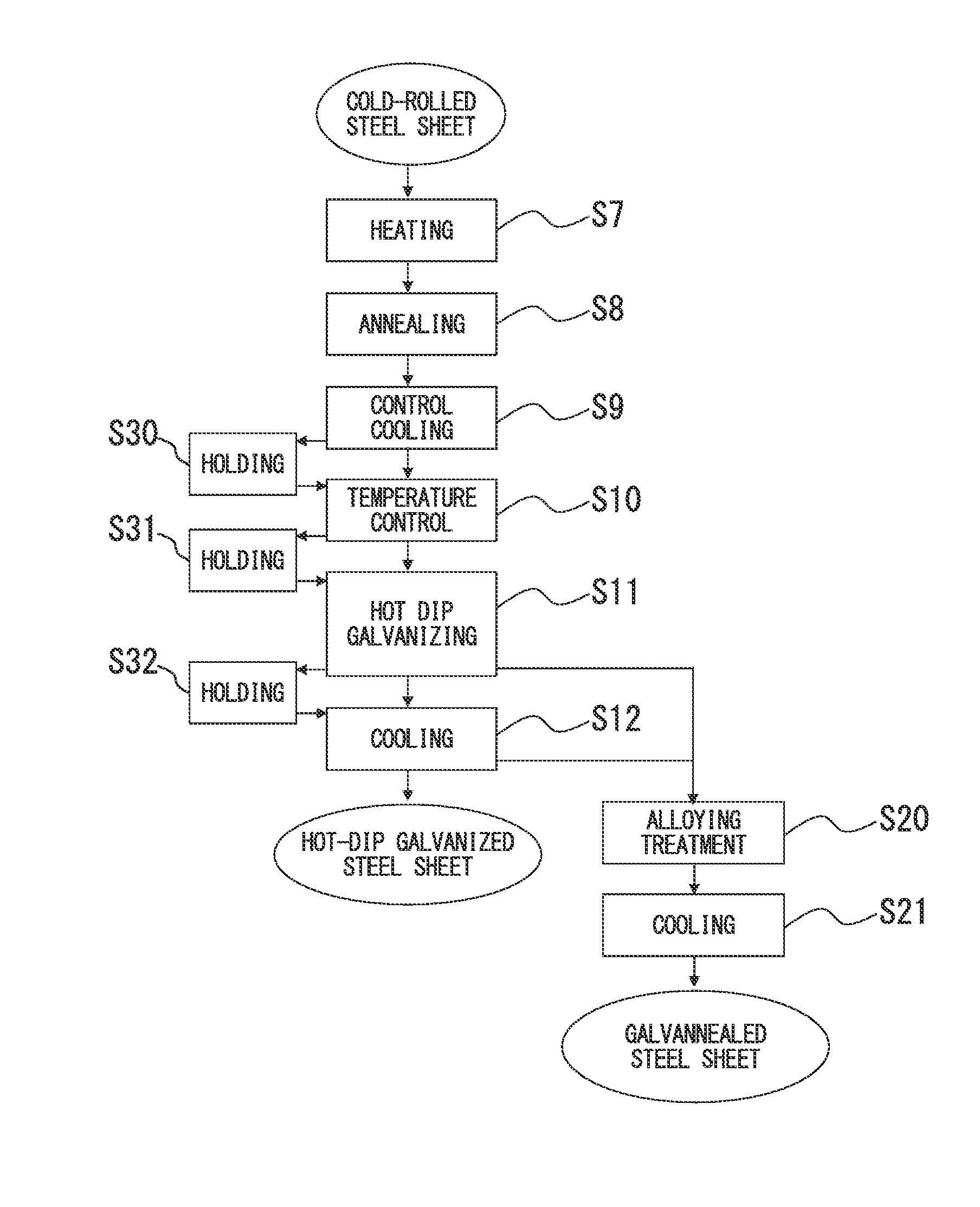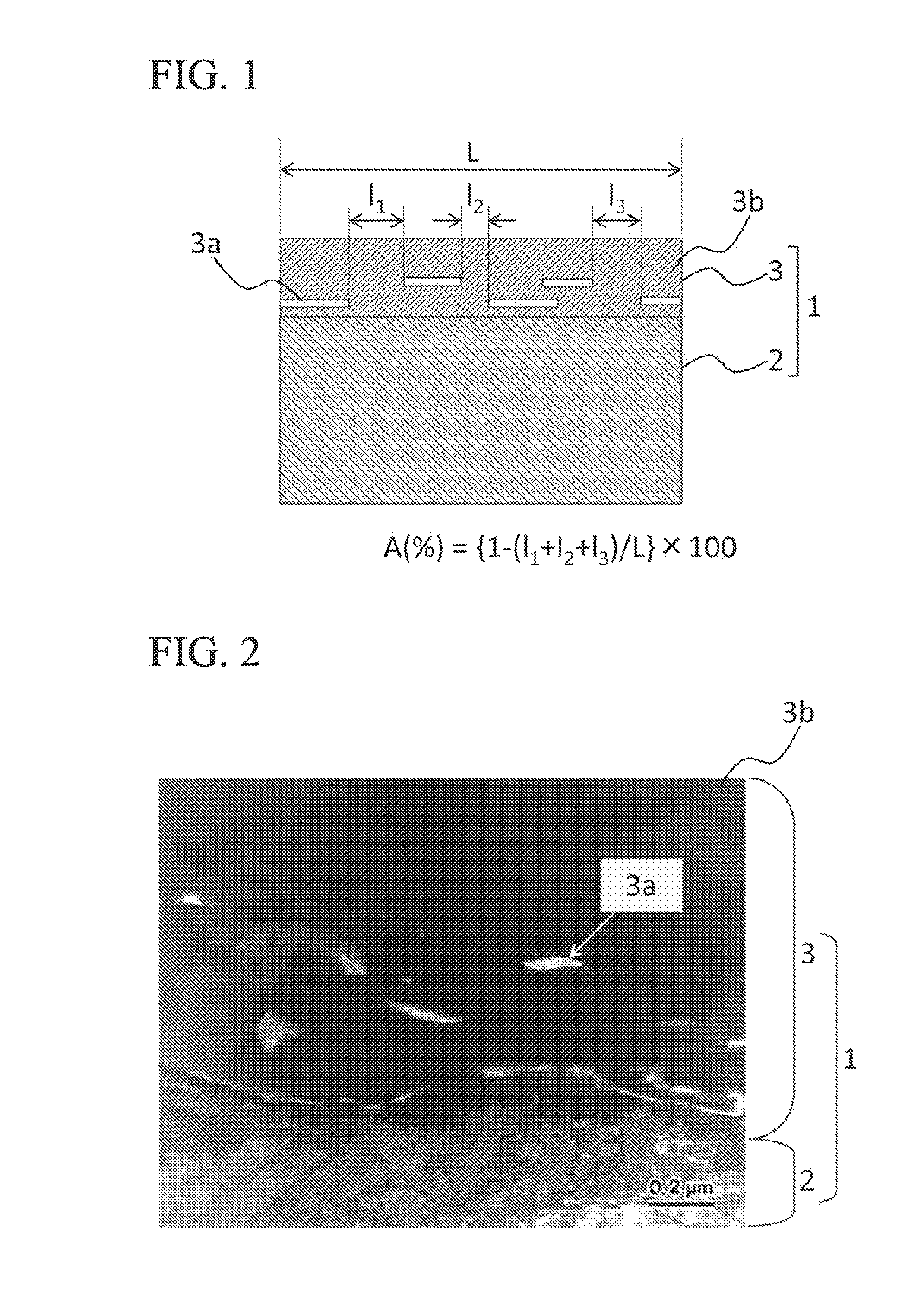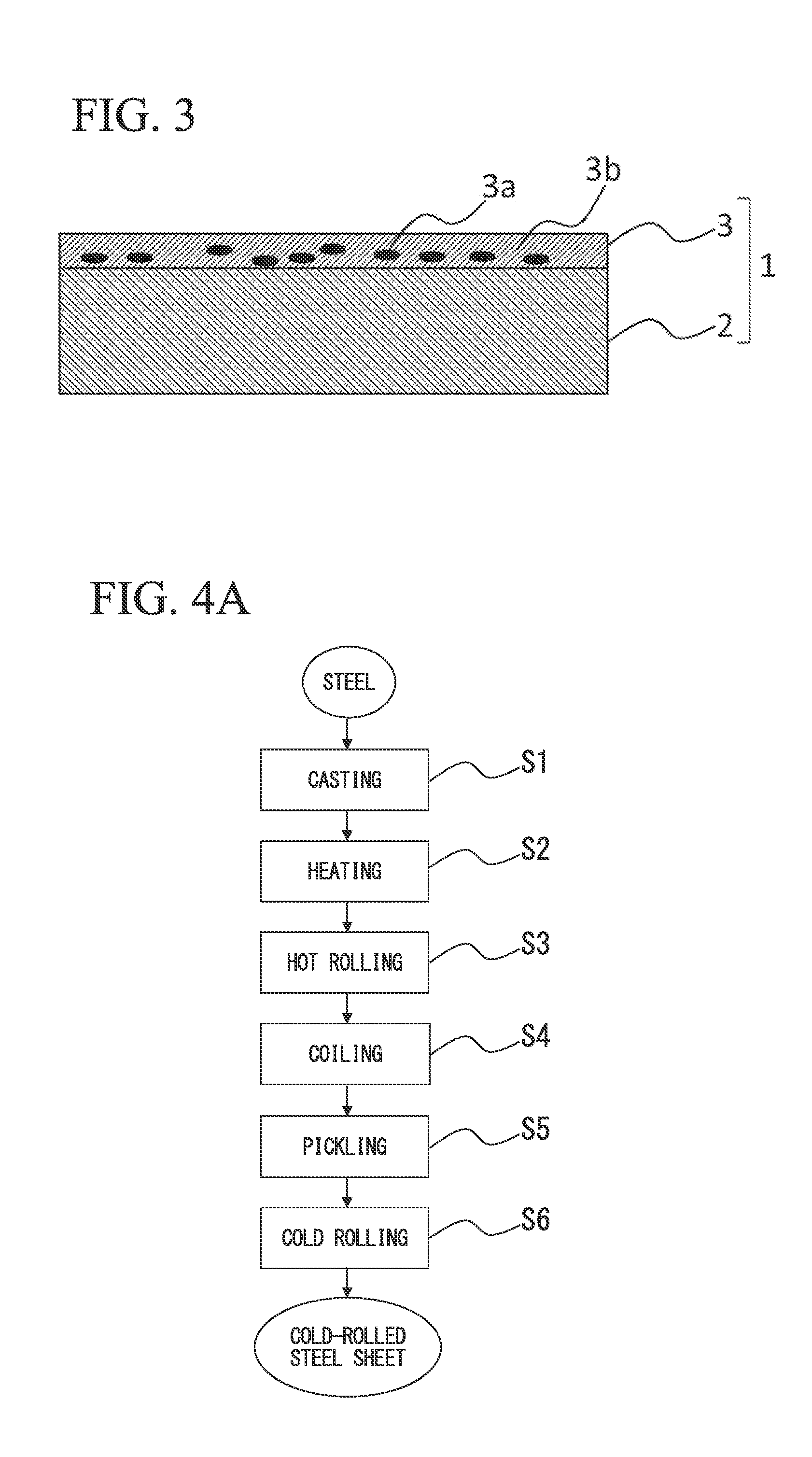Galvanized steel sheet and method of manufacturing the same
a technology of galvanized steel and steel sheets, applied in the field of galvanized steel sheets, can solve the problems of deterioration of the formability of materials, hydrogen may induce the delay fracture, and the delay resistance is required, and achieve excellent plating adhesion, excellent delayed fracture resistance, and high elongation
- Summary
- Abstract
- Description
- Claims
- Application Information
AI Technical Summary
Benefits of technology
Problems solved by technology
Method used
Image
Examples
examples
[0201]Next, examples of the present invention will be described in detail.
[0202]The hot-rolled steel sheets obtained by hot-rolling the continuously cast slabs having chemical compositions (however, a balance includes Fe and unavoidable impurities) shown in Table 1 under the conditions of hot rolling shown in Tables 2 and 5 (in Tables, slab heating temperature and finish rolling temperature) were water-cooled in a water-cooling zone, and then, coiled at the temperature shown in Tables 2 and 5 (in Tables, coiling temperature). The thickness of the hot rolled steel sheets was 2 mm to 4.5 mm.
[0203]The hot rolled steel sheets were pickled and then cold rolled to have a thickness of 1.2 mm after cold rolling under the conditions of cold rolling shown in Tables 2 and 5 (in Tables, roll size and cold rolling reduction), and thus, cold-rolled steel sheets were formed. Then, the cold-rolled steel sheets were subjected to various heat treatments and hot dip galvanizing treatment in a continuo...
PUM
| Property | Measurement | Unit |
|---|---|---|
| Temperature | aaaaa | aaaaa |
| Temperature | aaaaa | aaaaa |
| Temperature | aaaaa | aaaaa |
Abstract
Description
Claims
Application Information
 Login to View More
Login to View More - R&D
- Intellectual Property
- Life Sciences
- Materials
- Tech Scout
- Unparalleled Data Quality
- Higher Quality Content
- 60% Fewer Hallucinations
Browse by: Latest US Patents, China's latest patents, Technical Efficacy Thesaurus, Application Domain, Technology Topic, Popular Technical Reports.
© 2025 PatSnap. All rights reserved.Legal|Privacy policy|Modern Slavery Act Transparency Statement|Sitemap|About US| Contact US: help@patsnap.com



